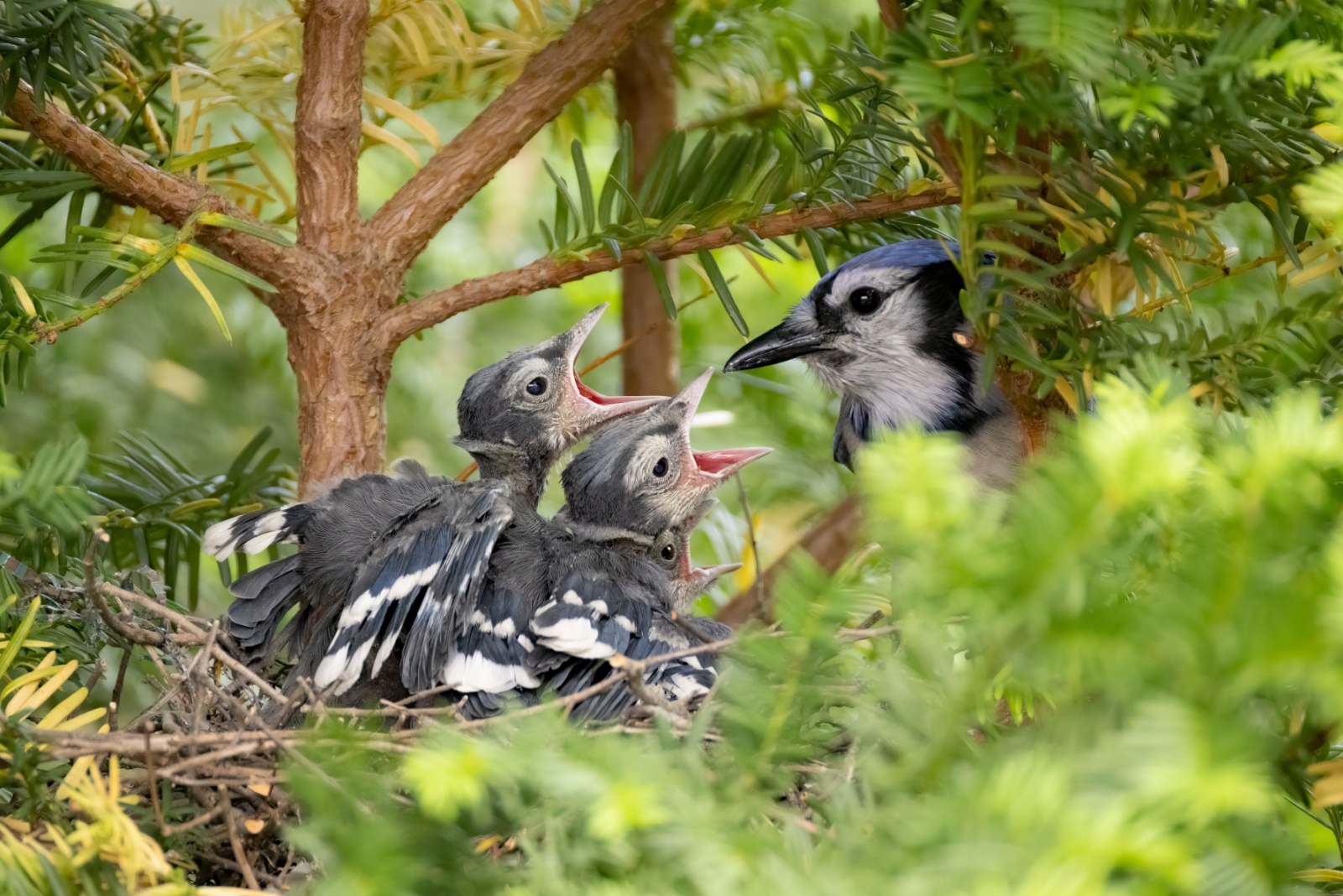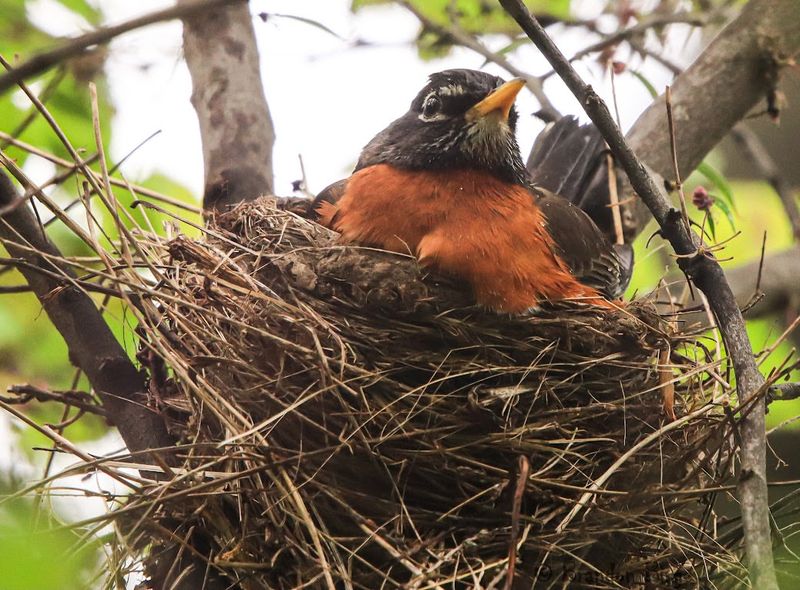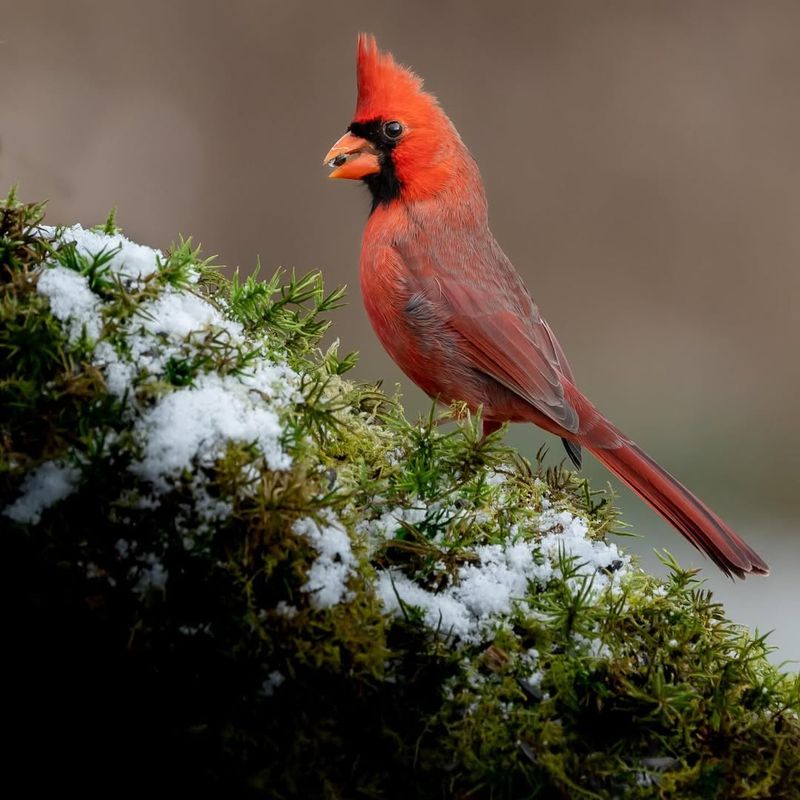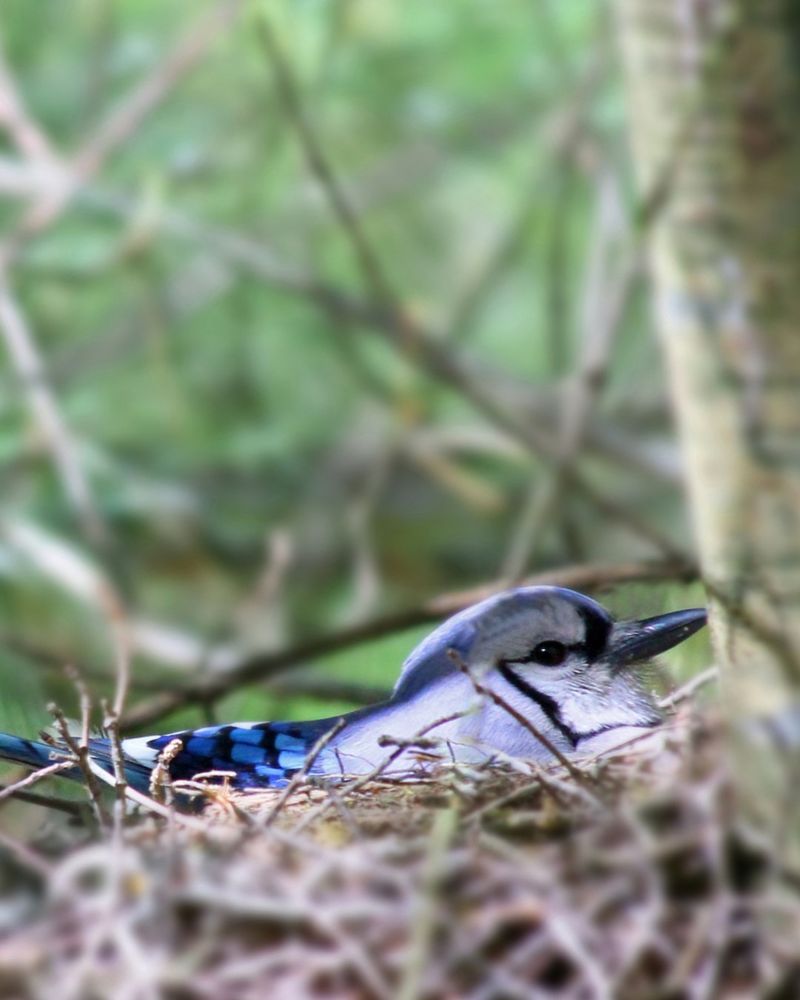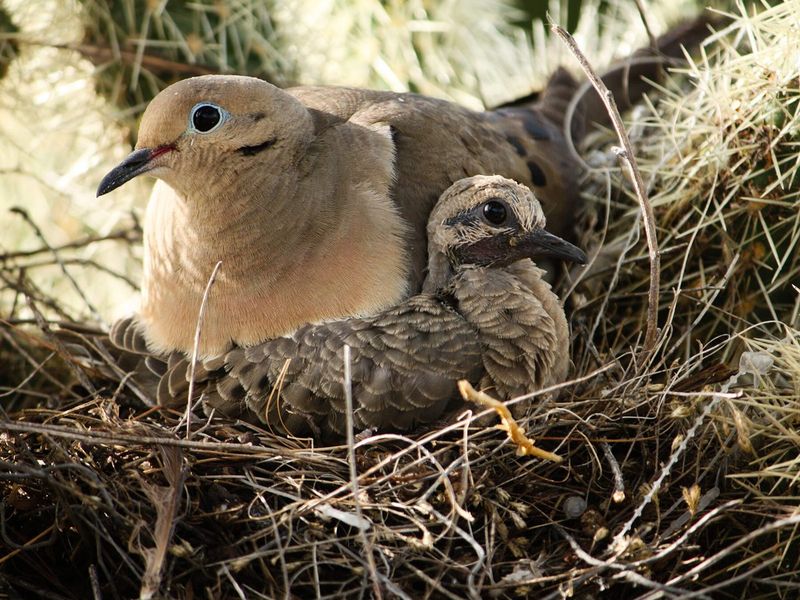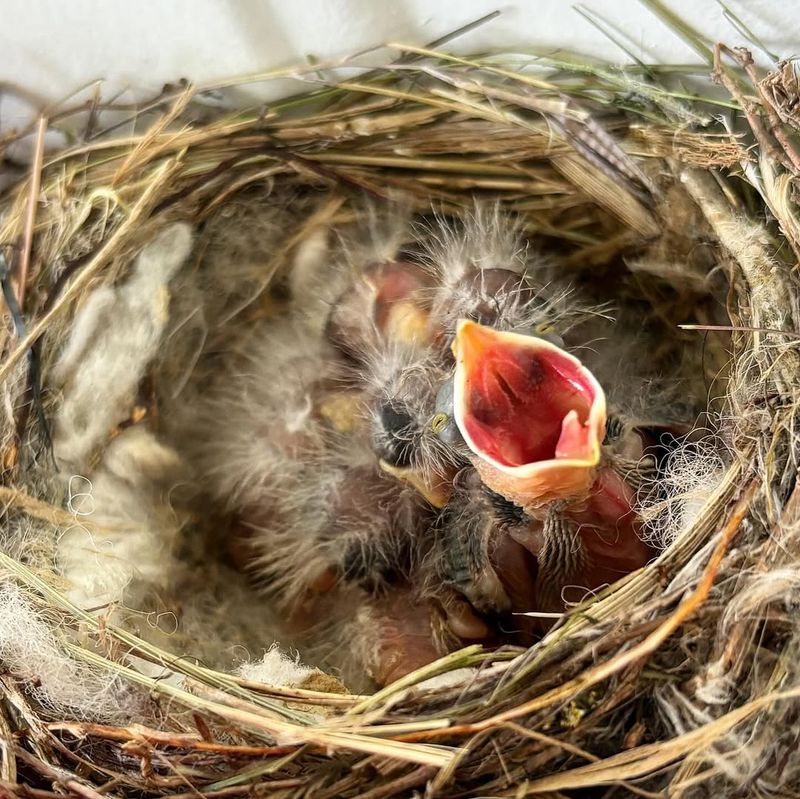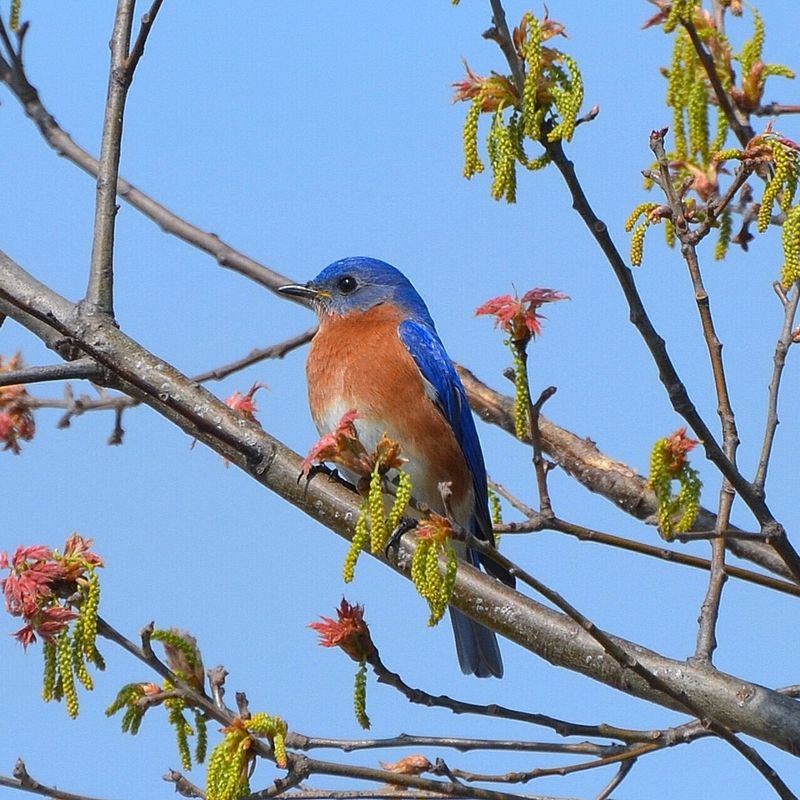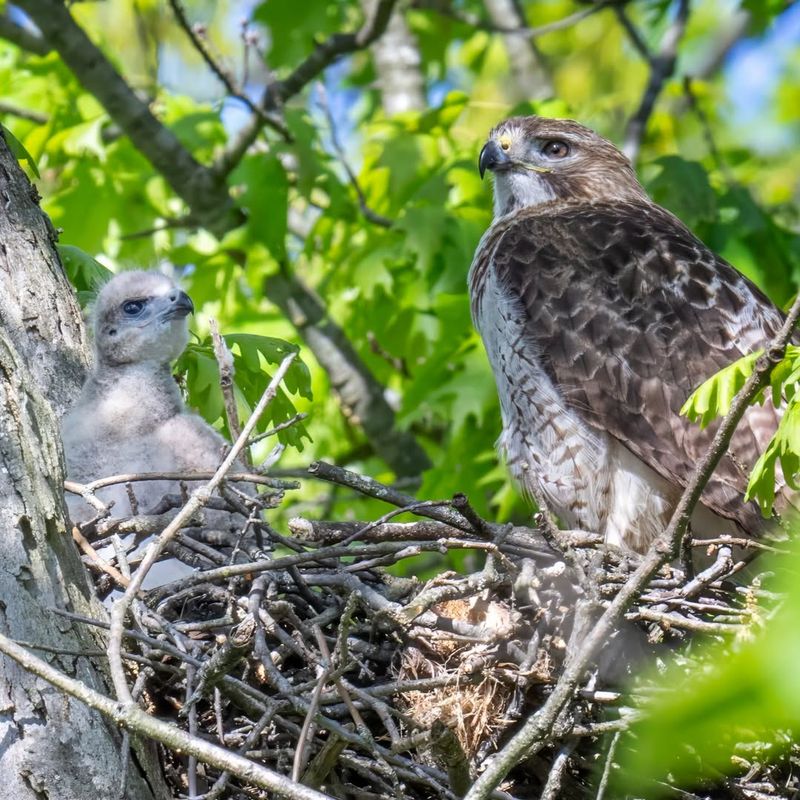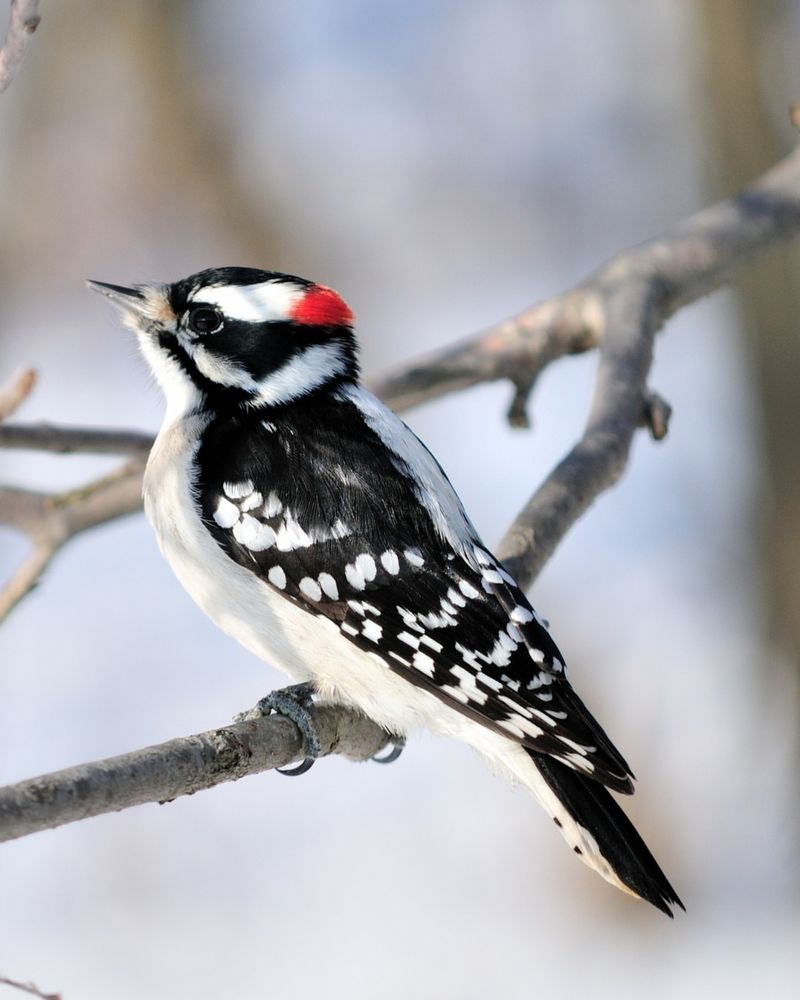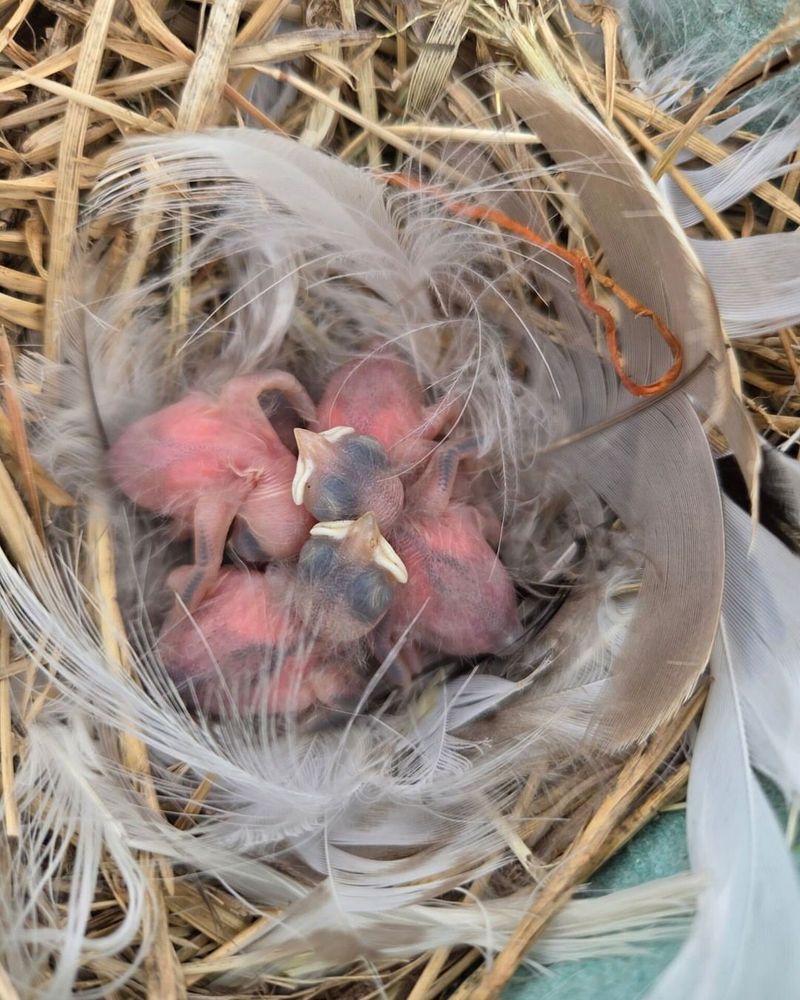New Jersey trees often double as prime real estate for birds, and once a nest appears, many homeowners feel torn between curiosity and concern.
A small bowl of twigs may look harmless, yet the law treats it as a protected sanctuary. One wrong move can open the door to stiff penalties and unwanted trouble.
In a state where skies fill with wings and backyards brush up against wildlife, understanding why certain nests stay untouched becomes a key part of responsible home care—and a wise way to stay out of hot water.
American Robin (Turdus migratorius)
Orange-breasted and cheerful, American Robins are one of the most recognizable birds in New Jersey yards. Their cup-shaped nests appear in trees, shrubs, and even porch ledges during spring and summer.
Protected under the Migratory Bird Treaty Act, disturbing their nests can result in serious legal consequences. Robins often raise multiple broods each season, so their nests stay active for months.
If you find one in your tree, enjoy watching the parents care for their young from a respectful distance instead of attempting removal.
Northern Cardinal (Cardinalis cardinalis)
With their vibrant red plumage and distinctive crest, male cardinals are backyard favorites across New Jersey. Females build well-hidden nests in dense shrubs and tree branches, carefully weaving twigs and grass.
Both parents fiercely protect their territory during nesting season. Federal law shields cardinal nests from disturbance, and homeowners must wait until babies fledge naturally.
Cardinals may nest two or three times per year, so patience is essential when you discover their hidden homes in your landscape.
Blue Jay (Cyanocitta cristata)
Bold and intelligent, Blue Jays construct sturdy nests high in oak and maple trees throughout New Jersey neighborhoods. Their loud calls often announce their presence long before you spot their blue feathers.
Despite their sometimes aggressive behavior toward other birds, jays receive full legal protection during breeding season. Removing their nests violates federal regulations and can harm vulnerable chicks.
These clever birds remember human faces, so respecting their nesting space builds a positive relationship with these fascinating backyard residents.
Mourning Dove (Zenaida macroura)
These birds are known for their gentle cooing sounds that echo through neighborhoods at dawn and dusk. Their nests look surprisingly flimsy, often just a loose platform of twigs that barely holds together.
Despite appearing fragile, these structures successfully raise multiple dove broods throughout warm months. Touching or moving these nests breaks federal wildlife protection laws.
Doves mate for life and return to favorite nesting spots year after year, so respecting their chosen tree location helps maintain these peaceful birds in your community.
House Finch (Haemorhous mexicanus)
House Finches originally came from western states but now thrive in New Jersey gardens and parks. Males sport rosy red coloring while females wear streaky brown feathers for camouflage.
They build compact nests in various locations, from tree branches to hanging planters. Their adaptability makes them common neighbors, but federal law still protects their nesting sites completely.
Watching a finch family grow provides wonderful entertainment, and leaving their nests undisturbed ensures these delightful songbirds continue enriching your outdoor space year after year.
Eastern Bluebird (Sialia sialis)
Oh, just look at this gorgeous little bird! Eastern Bluebirds bring brilliant splashes of color to New Jersey landscapes with their sky-blue backs and rust-colored breasts. Unlike many species, they prefer nesting in tree cavities or specially designed nest boxes.
Once declining due to habitat loss, conservation efforts have helped their populations recover significantly. Their protected status means homeowners cannot interfere with active nests anywhere on their property.
Providing nest boxes actually helps these beautiful birds thrive while allowing you to enjoy their presence without legal concerns about natural nests.
Red-tailed Hawk (Buteo jamaicensis)
Red-tailed Hawks build enormous nests high in tall trees, often reusing and expanding the same structure for years. These magnificent raptors have adapted well to suburban areas, hunting from perches overlooking fields and yards.
As protected birds of prey, their nests receive strict legal safeguards under multiple wildlife laws. Disturbing hawk nests carries particularly severe penalties due to their ecological importance.
Homeowners fortunate enough to host hawk nests should consider it a privilege, as these powerful birds help control rodent populations naturally.
Downy Woodpecker (Dryobates pubescens)
They are the smallest woodpeckers in North America, yet they excavate impressive cavity nests in damaged or withering tree limbs. Their rhythmic drumming announces their territory and attracts mates each spring.
These cavity nests later provide homes for other species after woodpeckers finish using them. Federal protection covers their nesting sites, and removing damaged trees with active nests violates wildlife laws.
Keeping some damaged wood in your landscape benefits woodpeckers and numerous other creatures that depend on these natural apartments.
Barn Swallow (Hirundo rustica)
Barn Swallows are aerial acrobats that catch insects mid-flight, making them valuable pest controllers around New Jersey properties. They traditionally built mud nests on cliff faces but now prefer building under eaves and tree branches.
Their cup-shaped mud nests attach firmly to vertical surfaces near sheltering overhangs. Once construction begins, these nests gain full legal protection throughout the breeding season.
Watching swallows swoop and dive while feeding their young offers incredible entertainment that makes any inconvenience worthwhile for most homeowners.
Carolina Wren (Thryothorus ludovicianus)
This birdies pack enormous voices into tiny bodies, filling gardens with loud, rolling songs year-round. Carolina Wren birds build dome-shaped nests in creative locations, from tree hollows to old flowerpots.
Their curious nature leads them to explore unusual nesting spots close to human activity. Regardless of location, their nests receive complete protection under federal migratory bird laws once eggs appear.
Wrens consume countless insects and spiders, making them wonderful garden allies worth accommodating even when they choose inconvenient nesting spots on your property.

